
25 minute read
ARTBA TRAINING RESOURCES AIM TO IMPROVE JOB SAFETY
As the transportation construction industry gets ready for its peak season, so too is the American Road & Transportation Builders Association (ARTBA) with its world-class safety training programs.
“For decades, ARTBA has worked to create and deliver high-quality education resources that are focused directly on the hazards faced by the transportation construction industry,” said Bradley Sant, ARTBA senior vice president for
safety and education. “Through our partnerships with key federal agencies, many of these materials are available at no cost.”
As the industry observed National Work Zone Awareness Week (NWZAW) April 26-30, ARTBA offered a comprehensive suite of courses to assist employers and workers enhance project site safety. ARTBA manages online, virtual classroom and face-to-face training throughout the year. The association also has a large library of reference guides, pamphlets and videos.
The Transportation Construction Safety Center provides information on how to safeguard construction workers, motorists, cyclists and pedestrians. The Center’s goal is to make transportation project sites incident-free worldwide.
The ARTBA Online Learning Center (OLC) offers a selfpaced instruction that operates on any device and addresses hazards with advice from experts. Individuals can earn Professional Development Hours (PDHs) that contribute to career advancement while staying abreast of new technologies and regulations.
The ARTBA Work Zone Safety Consortium Online Learning System provides free classes to industry professionals. Located in the ARTBA Online Learning Center, this coursework was developed with the Federal Highway Administration (FHWA).
ARTBA also offers the largest online collection of safety resources through the National Work Zone Safety Information Clearinghouse, operated in partnership with the FHWA and the Texas A&M Transportation Institute.
For more information, visit www.artba.org.
erfwoP ul. Dependabl epe u .e dab pen ndab bl pe w . Noeel oliablR s aw th hat’ orkin ki d-w dh har r w ng .e r cr w
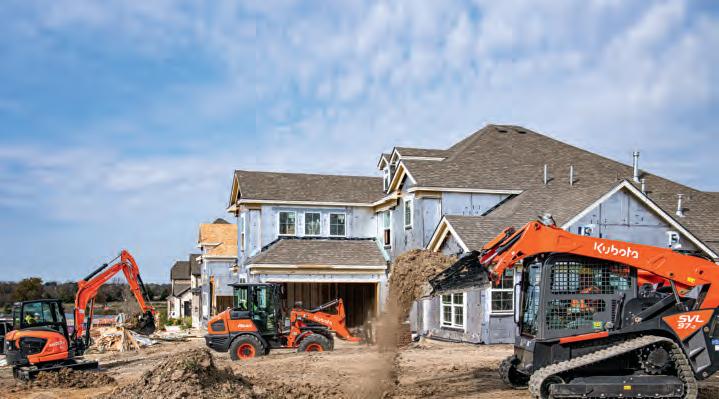
onC nstruction Lineup
enginesa eubote abl Dur K
Stop by for a closer look at o ur complete construction lineup. • The world’s #1 selling compa act t• Maneuverable, high-visibility y, , excavator for over 15 years* y 40 high performance, new R6g p • Powerful, comfortable new wheel loader
SVL97-2 track loader

Call Drew for Service & Brian for Parts. 704-233-4242 800-443-7569
Mon.-Fri. 7:30am-5:00pm Sat. 8:00am-12:00pm 3144 Hwy 74 East Monroe, NC 28112 www.brookssales.com
NPT1200
Niece Water Towers deliver reliability and durability when you need fast mobile water service. With a 12” discharge tube it fills your tanks at a rate of over 1,000 gallons per minute. Offers removable power pack for security, fifth wheel tow hitch, professionally engineered and constructed.
It features (8) legs for stability . 5th wheel set up for quick “tow and go.”
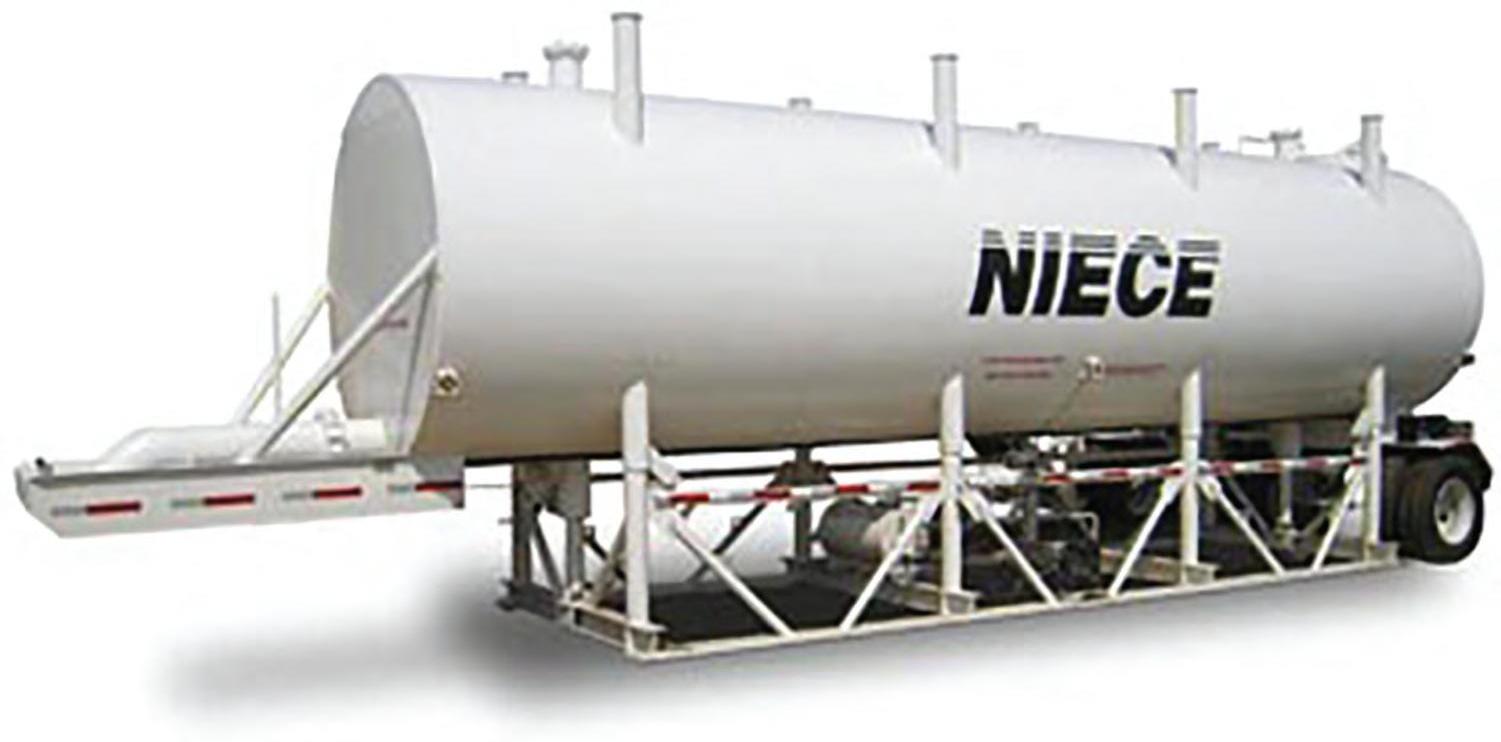



OFF ROAD WATER TRUCKS
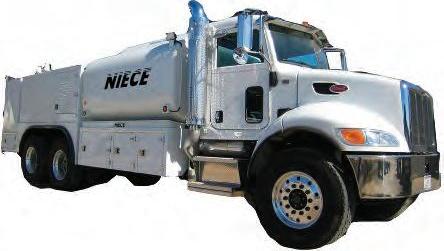
OVER THE ROAD WATER TRUCKS
FUEL AND LUBE TRUCKS
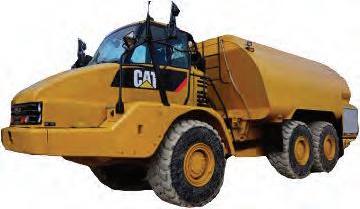
FUELER TRUCKS
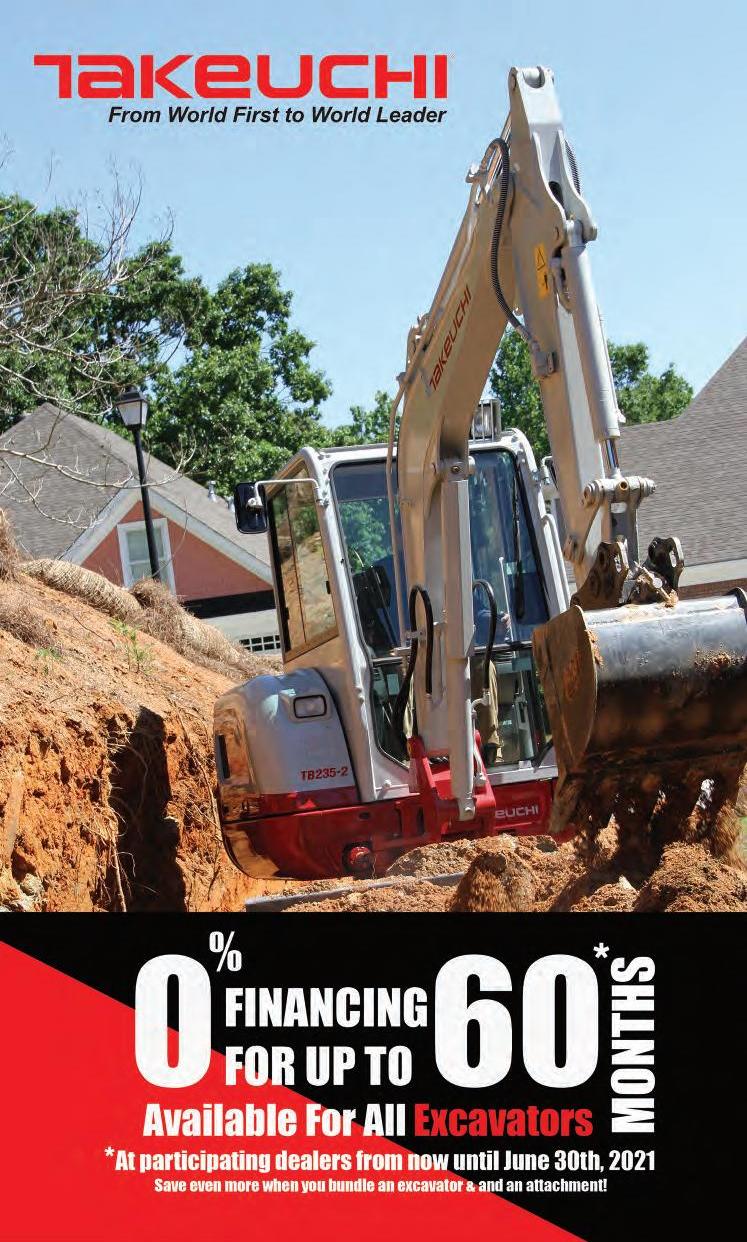





3570 Dickerson Pike • Nashville, TN 37207 (615) 865-7800
www.parmantractor.com BIG PUMP OS S F R SAL &E RENT


S riming Telf-P Tr rash Pump
a o Submersible aulic TH Hy ydr Tr rash Pump
Rotary Wellpoint, Selff-Pr riming Dewatering & Hydraulically-Driven B Bypass Trash Pumps Big Pumps with Flows from 5-1M GPM Turn-key & Cost-E ective e Solutions Fast Response, Expert Service & Repair
T Th he Power to M e Wvove W Wat ater®
Since 1926 | mwipumps.com
o o™otR o o W Wellp ellpoint Dewatering
C
all for a FREE Pr jo ect Review: 772-770-0004
Visit us -Booth C31438 at CONEXPO 2020
HBS Systems, a provider of web-based equipment dealership management solutions and rental software, announced an advanced telematics integration with Kubota.
This telematics integration will strengthen the support NetView ECO provides to Kubota dealerships throughout North America, according to the companies.
The benefits Kubota dealers can expect include: • Track unit location for dealer and customer-owned fleets. • Geo-fence job sites to receive notifications, minimize theft and watch for potential misuse. • Monitor unit meters and usage time for preventative maintenance, cost savings and rental contract accuracy. • Increase service efficiency and customer satisfaction by receiving fault codes that expedite work orders within NetView ECO. • Manage from one customizable screen through NetView ECO’s Service Connect, accessible from anywhere on any device.
“We’re connecting dealers with customers and their machines with new technology to improve dealership productivity and reduce machine downtime on the job-site or in the field which helps increase customer satisfaction,” said HBS Systems President and CEO Chad Stone.
“Our development team is consistently providing first-to-market technology and benefits not found in the industry. The telematics integration with Kubota allows dealers to monitor machine health as well as receive alerts about any machine issues or potential problems. Dealers can proactively order parts or send a service technician right to the customer’s location and more.”
VACCINE from page 1 “Getting their shot is another way that workers can protect their colleagues, as well as their loved ones and community members.”
Getting the Message
The goal of the vaccination awareness campaign was to reach as many construction workers, subcontractors and partners as possible.
Though other member organizations felt it was too soon to discuss outcomes, the AGC’s Brian Turmail noted reaction to the weeklong event was “overwhelmingly positive.”
The importance of safety for the worker, his or her coworkers, and all the people they come in contact with, was the message.
“I think the most powerful message our members hit upon is, ‘Hey, you wouldn’t let someone go onto a job site without a hard hat and safety vest,’” said Turmail, AGC vice president of public affairs. “Getting vaccinated for the coronavirus is the same thing.”
Safety in construction is built around everyone keeping each other safe, he stressed. “What are you doing to protect your coworkers and those outside of work from the coronavirus?”
Resources and information related to the safety, effectiveness and availability of vaccines in workers’ areas were distributed.
AGC created toolbox talks and a public service announcement that firms can use while talking to workers.
The PSAs highlighted the safety testing that the various vaccines have undergone, so workers know the medicines are safe to take.
“But an even stronger message is, ‘You wouldn’t back up an end loader without looking around you. Why would you not get vaccinated?’” said Turmail.
He added in this situation, the peer pressure is positive. “What we’re trying to accomplish is to show construction workers how easy it is to get vaccinated.”
CISC also partnered with the CDC’s National Institute for Occupational Safety and Health to host a vaccination education webinar for the industry.
Coalition members, including AGC, continue to urge construction workers to get vaccinated.
“The construction industry showed America how to work safely during the early days of the pandemic,” said Sandherr. “And now we are going to show America how important it is to get their vaccines as soon as they can.”

Despite employees getting vaccinated, contractors will still require masks and social distancing on the job site.
Encouraging Vaccinations
In February, labor law firm Littler, surveying employers nationwide, found only 6 percent of respondents planned to require employees to get vaccinated.
In fact, nearly half of respondents had decided they would not mandate the COVID-19 vaccine for several reasons, chiefly company culture and employee relations issues.
Companies are opting instead to encourage vaccination, continuing remote work and maintaining safety protocols on the job site.
AGC and law firm Phillips Fisher created vaccination guidance for contractor members developing employee vaccination protocol.
On the question of how to overcome employee hesitancy, AGC stated that employers should educate regarding the benefits and safety of the vaccine, compared to the risks of not being vaccinated.
“They should also explore ways to make it easier for employees to access the vaccines.”
Examples included providing information about local vaccine providers and organizing clinics at or near job sites.
Paying for vaccination costs and allowing employees to get vaccinated during paid work hours were other options.
Those participating in the CISC vaccine awareness program learned how easy it was to host a vaccination clinic for employees and their families.
Local health departments and hospitals, as well as labor union partners, can help arrange access, suggested AGC.
“The easiest part of running an onsite clinic was organizing the clinic,” said Turmail of an AGC member who hosted a vaccine clinic.
“Some employers are considering incentives to encourage employees to get vaccinated. But these efforts appear to be subject to HIPAA and EEOC rules regarding wellness programs,” continued the AGC guidance.
Employers should confirm with counsel before implementing incentives, stressed the guidance.
Safety, of the worker, his or her coworkers, and all the people they come in contact with was the message of COVID-19 Vaccine Awareness Week in April. Legal Ramifications
Turmail said whether contractors mandate or encourage vaccinations may be dictated by jobsite owners or clients.
Though not aware of any AGC member contractors who have mandated their employees get vaccinated, he said many are anticipating insistence on it.
“They see a future where project owners will insist every worker on the project be vaccinated,” he said.
“It doesn’t help that OSHA came out with guidance put in place with disincentives for mandating vaccinations,” added Turmail.
OSHA recently stated that if the vaccine is mandated and the vaccinated worker has an adverse reaction to the vaccine, that reportable incident is the responsibility of the employer.
In an updated series to answers to its COVID-19 Frequently Asked Questions (FAQs), OSHA has addressed rules for recordable incidents.
If an employer requires an employee to get vaccinated as a condition of employment, any adverse reaction to the vaccine is work-related, stated OSHA.
“The adverse reaction is recordable if it is a new case under 29 CFR 1904.6 and meets one or more of the general recording criteria in 29 CFR 1904.7.”
Adverse reactions to recommended coronavirus vaccines may be recordable if the reaction is work-related, a new case and meets one or more of the general recording criteria in 29 CFR.
However, “OSHA is exercising its enforcement discretion to only require the recording of adverse effects to required vaccines at this time,” reads the FAQ response.
“Therefore, you do not need to record adverse effects from COVID-19 vaccines that you recommend, but do not require.”
Design-build firm Clayco Construction, headquartered in St. Louis, Missouri, announced in April it was mandating both worker coronavirus vaccinations and a return to offices.
CEO Bob Clark said the company’s goal was to set an example and “step out from the shadows, but he’s changed his mind since OSHA updated the guidance.
“We, sadly, had to back off our mandate because OSHA did something I don’t under-




CAP from page 1
desirable to companies to locate and conduct business in; and provide a revenue source for new highway projects.
Innovative Funding Plan
In 2009, the 87th Arkansas General Assembly passed Act 374 to create a Blue Ribbon Committee on Highway Finance. That committee was charged with figuring out a way to finance transportation improvements and to propose highway finance legislation for the 2011 session.
What the committee came up with was a constitutional amendment to levy a temporary sales-and-use tax. The idea received bipartisan approval and was added to the 2012 statewide general election ballot. Arkansas voters approved Ballot Issue No. 1: a constitutional amendment that added a half-cent sales tax for 10 years with proceeds going to improve the state’s intermodal transportation system, including projects to widen and improve about 200 mi. of highways and interstates. Taxes are not raised on groceries, medicine or gas. The tax will end after 10 years when the bonds are paid off.
Imposed in July 2013, the state sales tax will contribute $1.8 billion (accrued from 70 percent of the tax revenue) toward highway and interstate construction projects. The remaining 30 percent of the tax revenue with be handed to local governments for road and street projects, with 15 percent each for cities and counties. Approximately $700 million of the money raised will be shared by every city, town and county to repair county roads and city streets. In addition, one cent from the per-gallon motor fuels tax is allocated to a permanent State Aid Street Fund that has been established to allow cities and town to apply for $20 million in additional funds.
“Funding was an issue,” Wylie said, emphasizing that the half-cent sales tax — approved by Gov. Mike Beebe, the legislature and the voters — has a sunset clause, meaning it will expire in 2023. Meanwhile, she said, it allows ARDOT to “get the project going faster than if we relied on federal funds” — although they will use federal funds for some highway projects.
Prioritizing Projects
With funding in place, ARDOT turned to prioritization of projects, initially letting projects based on what was “shelfready,” Wylie said — projects requiring minimum work or minor updating. Determining factors included estimated construction schedules and cost, the need to widen two-lane highways to four-lane highways in vital corridors and preconstruction work already completed.
The design-bid-build projects come in a “large range of sizes,” she said, from $10 million to $187 million. To help keep track of so many projects, ARDOT contracted with Garver, an Arkansas-based consulting engineering firm specializing in water, transportation, aviation and heavy civil infrastructure.
“Our role is to work with designers and consultants on construction plans, to monitor financials and manage projects,” said Earl Mott, program manager and director of construction services.
Garver keeps a master program schedule and works with all the designers to estimate the amount of time needed to get plans ready to bid, factoring in utility relocation and other factors.
“We provide additional organization — scheduling, cash flow,” Mott said.
Garver also helps balance bond sales and tax money coming in and going out.
Because ARDOT must closely track finances and payout curves with about 20 different contractors over several years and so many projects, Wylie said they “developed a prosecution of progress requirement that forces contractors to be transparent about time and financial progress. Having schedule requirements helps us stay on track and predict the monetary payout over two to three months.”

The goals of the Connecting Arkansas Program include improving transportation connections between cities; increasing capacity by widening highways to four or more lanes; improving safety; and easing congestion.
Contracts
According to Wylie, 17 projects are completed; 12 are currently under construction; and 12 more are yet to be let to bid. A few of the completed projects include: • I-630 Pulaski County widening (Manhattan Road & Bridge Co.): $96,523,759.01 • Hwy. 70 Garland/Saline Counties (McGeorge Contracting Co. Inc.): $82,188,466.06 • Hwy. 412 Benton County (Eutaw Construction Co. Inc.): $108,866,686.88
All contracts include incentives and disincentives, per calendar days, to encourage contractors to adhere to the schedule.
30 Crossing
One of the CAP projects currently under way is known as 30 Crossing, or I-30 Pulaski County. The purpose of this $540 million design-build project is to enhance one of the most-traveled roads in the state by increasing capacity and improving safety.
Phase 1 occurs in Little Rock and North Little Rock. The remaining portions of the project will be constructed during future phases. Under general contractor Kiewit Massman Construction, a joint venture, about 100 workers are currently onsite, although Andrew Kimichik, construction manager on the 30 Crossing project in downtown Little Rock (I-30 Corridor in Pulaski County), said the GC is “steadily adding more craft headed into summer. We will likely get to around 150 by the end of summer.”
They’ll be working on the Arkansas River Bridge — reconstructing it to three through lanes, with two collectordistributor lanes and an auxiliary lane in both directions. The bridge will include an improved opening for the Arkansas River navigational channel.
Crews also will add lanes eastbound in North Little Rock; eastbound through the Broadway Street interchange to Bishop Lindsey Avenue; and reconstruct the Broadway Street interchange. Work includes new pavement and restriping of eastbound I-30 to four lanes to the interchange with I40, which creates a fourth lane without widening the freeway or bridge structures to add capacity. In addition, they will reconstruct portions of the North Terminal to remove an issue with eastbound I-40 weaving between the North Terminal and the I-40/Highway 67 interchange. They will build a new bridge to carry eastbound I-30 entrance ramp traffic over I-40 eastbound ramp lanes to enter traffic in the far-left eastbound lanes.
Crews will build a new, wider bridge over I-30 at 6th Street. Improvements on I-30 in Little Rock take place above a reconstructed I-30-Highway 10 split diamond interchange and along four main lanes in both directions between 3rd and 9th streets. The split diamond configuration will remove the cloverleaf ramps and provide direct ramp access with the frontage roads.
As part of that work, Highway 10 will be reconstructed along existing 2nd Street and extended from Cumberland Drive, below I-30, to Mahlon Martin Street. The clover leaf ramps will be removed and the right-of-way between President Clinton Avenue and 3rd Street will be regraded to accommodate future use as a public space. Mahlon Martin Street will be extended and improved from East 4th Street to President Clinton Avenue.
Ramp improvements at the I-630 interchange include: • Two eastbound I-630 ramp lanes entering I-30 eastbound rather than being reduced to one lane • A new ramp lane from the eastbound I-630 ramp to the eastbound I-30 frontage road • A second lane from the westbound frontage road entrance ramp to I-30 westbound at I-630 • East and West I-30 main lanes through the I-630 interchange narrowed from three to two lanes in both directions
Work on 30 Crossing began in late summer, but Kimichik said the early winter months posed some weather-related challenges due to significantly colder temperatures and the high amount of rainfall Little Rock gets that time of year.
Substantial completion is expected January 2025.
“Kiewit Massman Construction has been closely coordinating with ARDOT and utility owners well in advance of breaking ground to work through all necessary ROW acqui-
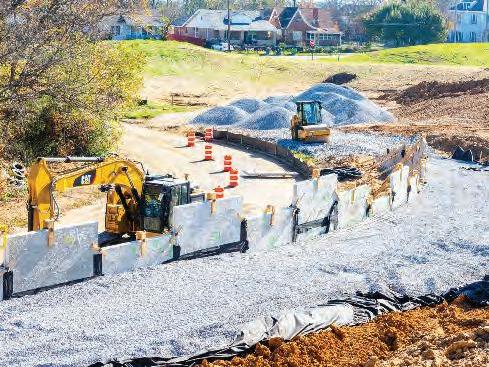
ELECTRIC from page 8
The air quality in greenhouses, orchards and fish hatcheries is of paramount importance, having a significant impact on the quality of produce that can be grown. And with customers demanding higher standards of environmental practice and food provenance, quiet, emission-free operations are the future.
Space often is also an issue in greenhouses and hatcheries, with narrow paths presenting a particular challenge and requiring excellent manoeuvrability. Electric compact machines offer the ideal solution: pollution free, quiet and with minimal vibration, they can be safely used on a variety of jobs to help with cleaning, cultivating, maintenance and heavy-lifting jobs. 5. Dust hazards
In high-dust environments like sawmills, diesel engines pose a danger because of the potential of sparks from the exhaust. But with electric machines this is no longer an issue. With no engine, and less noise, enabling co-workers to talk to one another more easily, they offer a safer, quieter alternative to diesel for all those heavy lifting jobs. What’s more, they require less maintenance than a diesel machine.
Another reason why the near silence of these machines is better for everyone, is that excessive noise is said to seriously harm human health. According to the World Health Organization (WHO), it “can disturb sleep, cause cardiovascular and psychophysiological effects, reduce performance and
provoke annoyance responses and changes in social behaviour.” 5. Landscaping
Landscaping jobs require a delicate hand, which is why the ECR25 Electric was chosen to work on one of the main show gardens at the RHS Chelsea Flower Show as one of its very first jobs after launching in 2019. The sustainable garden was dubbed the “quietest on site” by BBC film crews, due to the machine’s low noise emissions. An additional benefit for landscaping projects such as this is that there are no pollutants emitted that can damage the precious trees or herbaceous borders. The fumes from a diesel exhaust can even kill buds before they get the chance to grow. It is one of the cleanest possible ways to do all the construction jobs a garden of this stature requires.
With the advent of stricter carbon emission regulations, and as we all look to meet our own CO2 reduction targets, electric machines will be key. The electromobility revolution is well and truly here.
For more information, visit www.volvoce.com.
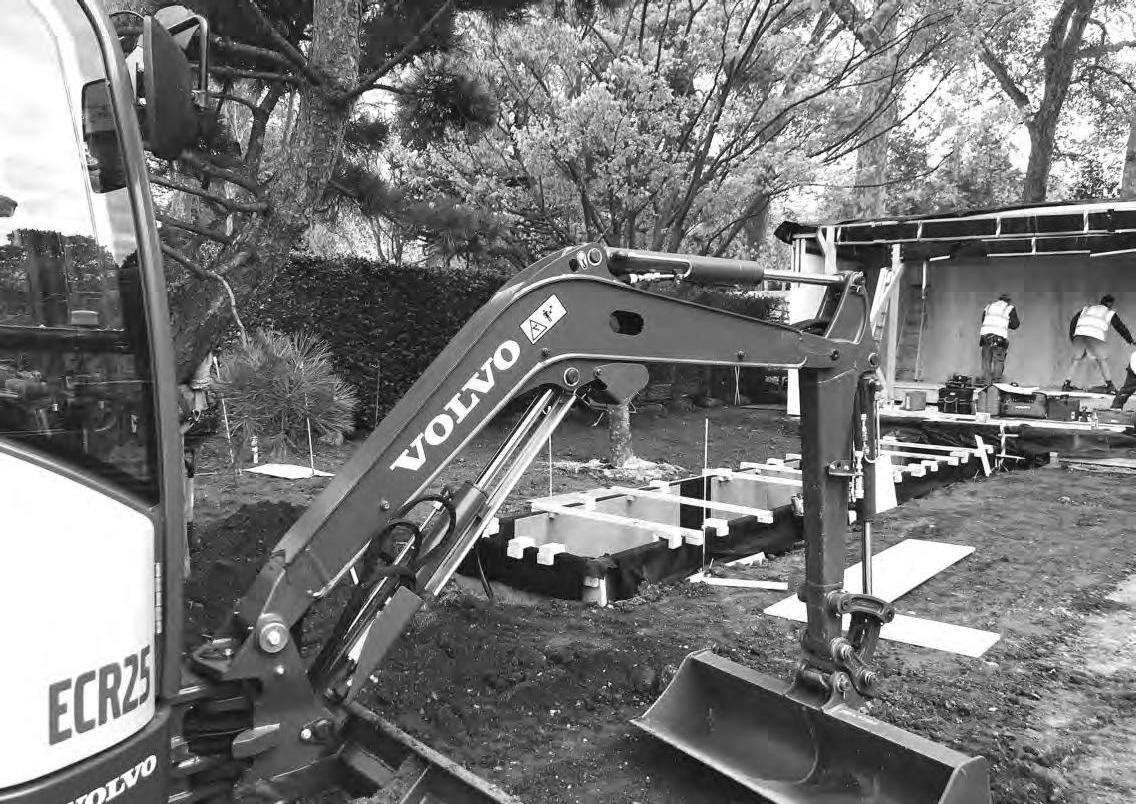
The silence of electric machines make them perfect for peaceful landscaping settings, such as at the RHS Chelsea Flower Show.

Electric machines are free from spark hazards, making them ideal for use in highdust settings. Higher standards of environmental practice and food provenance are driving the shift to electromobility.

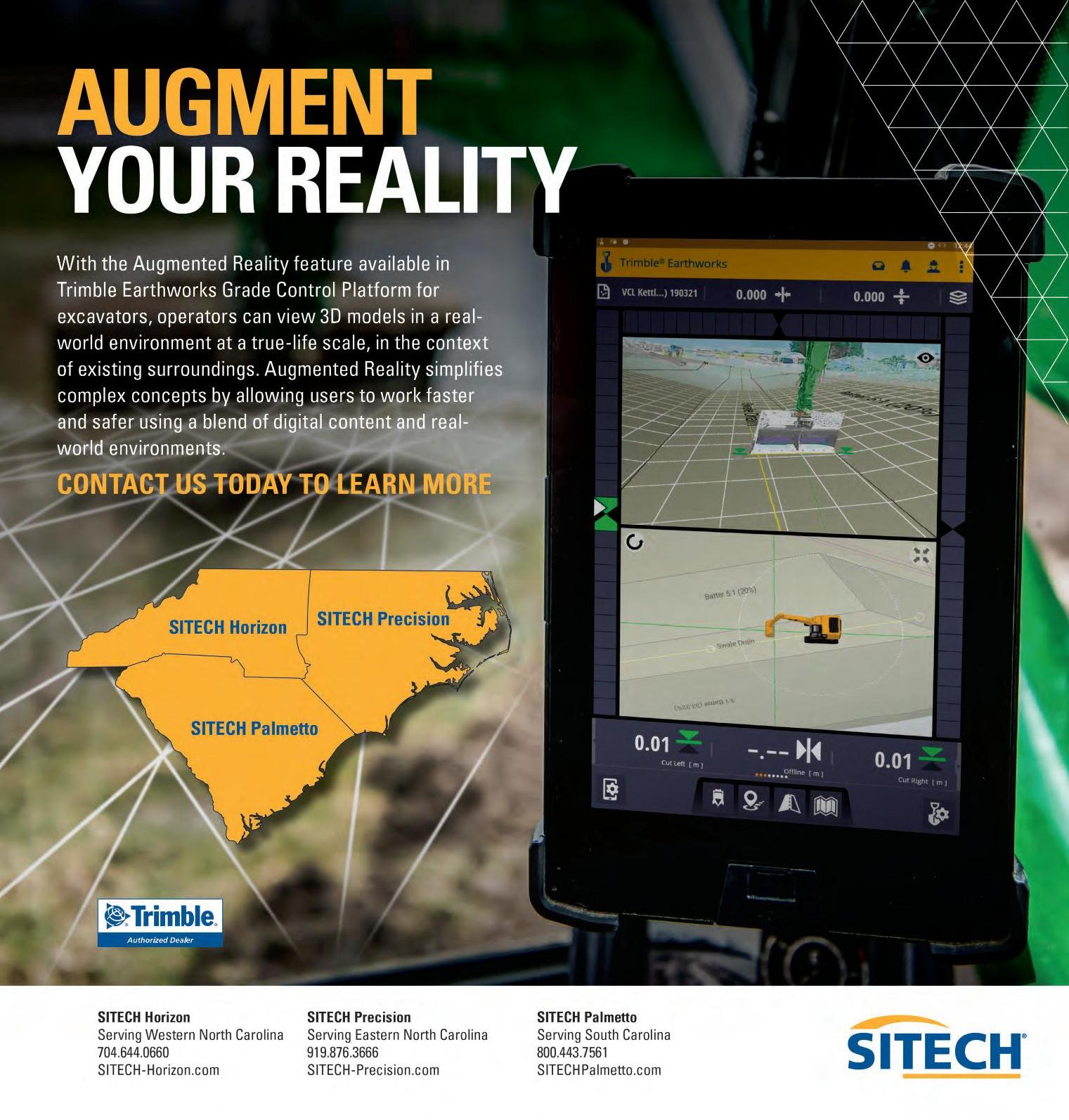
Virginia Tech will receive $50 million from Boeing, the world’s largest aerospace company, to go toward financial aid to build and diversify the graduate technology campus the university is developing in Alexandria, Va.
The multi-year donation to Virginia Tech from the 105-year-old American aerospace and defense contractor was announced May 4 and matches the largest ever corporate gift to the university, based in Blacksburg, Va.
Construction of the Virginia Tech Innovation Campus in Alexandria is expected to get under way this fall. If all goes to plan, the northern Virginia campus’ first building will open in 2024 with a focus on research and graduate education in computer science and computer engineering.
According to the Washington Post, the university’s goal for the campus is to grow to approximately 750 master’s degree students and 200 doctoral students.
“This is a milestone moment in our university’s history, and it will propel our work to help establish the greater Washington, D.C., area as the world’s next major tech hub,” Timothy Sands, president of Virginia Tech, said in a statement.
The university has approximately 36,000 students, most of them on its main campus in Blacksburg.
The first 79 Innovation Campus master’s students are based at a Falls Church, Va., location. In 2020, they began taking classes online for this academic year due to the coronavirus pandemic, the Post reported.
The new Virginia Tech campus will occupy a 3.5-acre site in the Potomac Yard neighborhood south of Alexandria’s Four Mile Run. The first academic building is slated to be 11 stories tall with 300,000 sq. ft. of floor space and is on track for a groundbreaking as early as September. Two more buildings also are planned that will each encompass about 150,000 sq. ft.
Boeing’s largess reflects the interest companies are showing in an educational project in northern Virginia near the site of the new Amazon East Coast headquarters.
David Calhoun, Boeing’s chief executive and a 1979 graduate of Virginia Tech, told the Post that the gift is meant to promote a skilled and diverse workforce. He said Boeing has eyed the campus closely in the years since it emerged as a venture to boost Virginia’s successful bid for the new Amazon headquarters.
“We want to be one of the early players on the campus,” Calhoun said in a videoconference interview with the newspaper. “Its location, next to policymakers, is going to matter.”
The Boeing gift also will support several other initiatives, according to Virginia Tech, including scholarships to “attract, retain and propel a diverse cohort” of master’s students and doctoral fellowships to attract a “highly skilled and diverse cohort of researchers.”
Monies also will be used to enhance student recruiting, academic support and programs to encourage military veterans and other nontraditional students to enroll, reported the Post. Additionally, there are plans to collaborate with local public schools to build interest among younger students in science, technology, engineering and mathematics. “The gift is immensely important,” noted Lance R. Collins, who started with Virginia Tech last August as vice president and executive director of the Innovation Campus. “I want this to be the most diverse graduate tech program in the country. This is going to make that possible.” He said that he wants to draw various underrepresented groups, including women, African Americans, Native SmithGroup photo Americans and Latinos, to the Alexandria campus, according to the Post.
The compact, four-acre campus will eventually comprise three academic buildings.

Public Service Announcement Shows Ease of Vaccine Shot
VACCINE from page 34
stand at all,” Clark said in an ENR Critical Path podcast
The National Law Review analyzed OSHA’s latest coronavirus FAQs and noted that for this discretion to apply, the vaccine must be truly voluntary.
“For example, an employee’s choice to accept or reject the vaccine cannot affect their performance rating or professional advancement,” reads the analysis.
An employee who chooses not to receive the vaccine cannot suffer any repercussions from this choice, it continues.
“If employees are not free to choose whether or not to receive the vaccine without fearing adverse action, then the vaccine is not merely ‘recommended.’”
The analysis also notes that exercise of this discretion is intended only to provide clarity regarding OSHA’s expectations as to the recording of adverse effects during the health emergency.
“It does not change any of employers’ other responsibilities under OSHA’s recordkeeping regulations or any of OSHA’s interpretations of those regulations.”
Finally, the National Law Review noted that this answer applies to a variety of scenarios where employers recommend but do not require vaccines.
Where the employer makes the COVID19 vaccine available to employees at work, where the employer makes arrangements for employees to receive the vaccine at an offsite location and where the employer offers the vaccine as part of a voluntary health and wellness program at the workplace are three examples.
“In other words, the method by which employees might receive a recommended vaccine does not matter for the sake of this question.”
There will inevitably become a split in the workforce among those who have and have not been vaccinated, noted the Littler survey summary.
Some 72 percent of survey respondents were concerned about providing reasonable accommodations to those who cannot or who refuse to get vaccinated.
Littler believes this concern may explain why most respondents appear to be separating remote work policies from vaccinations.
“It’s tempting to see vaccines as a cure-all for the extreme disruption wrought by COVID-19,” said Devjani Mishra, on Littler’s COVID-19 task force.
But the reality is “they are just one arrow in the quiver for employers,” who must continue existing safety protocols, including symptom screenings, travel restrictions, face masks and distancing, said Mishra.
“Especially in the transition period — when some workers are vaccinated, and others are not — organizations must remain hypervigilant in enforcing these policies as a matter of workplace safety, while being mindful of employee morale.”
Positive Peer Pressure
Clayco Construction CEO Clark told employees that workers must come back to the office by May 10.
He notified employees that with their increasing availability vaccinations would be mandatory, with time off available to get them.
He’s allowing exceptions for medical reasons, pregnancies and “sincerely held” religious beliefs.
Clark said only a handful of employees of the Chicago-based company had applied for exceptions.
Among several safety precautions in place, Clayco will still require employees to wear masks.
Clark said Equal Opportunity Employment Commission rules allow the vaccine mandate.
He believes Clayco is not as efficient when employees work from home, though it grew revenue during the pandemic as work at job sites continued.
“Anybody who says they can be completely remote I think will suffer the consequences of not being efficient and not being able to recruit effectively,” he said.
“One of the most important things about Clayco is the people culture, and we can’t continue to keep our culture the way that we are working remotely.”
Plus, he said, some 10,000 field workers continued to report to job sites across the United States, many via commercial flight, with no virus cases directly attributable to the travel.
So, it’s not fair, Clark said, to expect those employees to report to work in person and not expect the same of support staff.
The slow pace of companies returning workers to offices frustrates Clark, according to the Business Journal article, especially in industries he works with.
“If we don’t all come back, how do all of the businesses that rely on all of us come back, survive?” he continued. “We have to draw a line. The vaccine is available, safe, incredibly effective and it’s time.” CEG










